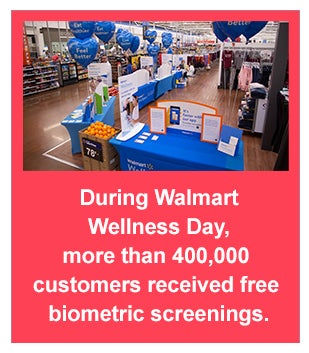

Walmart Leader Shares His Vision of Health Care in 2040

As much as technology and improved data analytics will drive future improvements in health care, there remains the unanswered question about how the role of clinicians will change. And with new models of care constantly evolving and forecasted shortages of physicians and nurses, the issue of supply and demand begs even more questions.
So, where exactly is the field headed as consumers increasingly search for simpler, more transparent, affordable and accessible care? Marcus Osborne, senior vice president of Walmart Health, laid out his vision during a recent online chat with the Chicago-based incubator Matter. He shared three views on what health care will look like in 2040.
1. AI-Driven Solutions Will Become Health Care’s Front Door.
Artificial intelligence technologies will play an even larger role in health care’s future than many experts now believe, Osborne noted. Hospitals and health systems already are leveraging deep analytics of large data sets using unbiased, evidence-based approaches to their analysis to determine optimal approaches to care.
At the same time, consumers are becoming more comfortable with AI-driven voice assistants like Amazon Alexa, Siri from Apple and Google Assistant. These and other AI solutions like robots are becoming more empathetic as they are brought into the home to engage with patients and give them greater control and the ability to manage their health, Osborne said.
“AI-driven solutions are fundamentally more scalable, accessible and affordable and make things simpler for people to engage,” Osborne said. “When you put that all together and you recognize the supply constraints that we have on the provider side, I don’t see how AI-driven solutions won’t become the front door for health care.”
2. Expect More Services to Move into Convenient Settings.
Look for more biometric screening, diagnostic and other services to continue to move into more accessible, stand-alone locations, Osborne said. Providers and retailers demonstrated during the pandemic that they could move rapidly to meet patients where they were to deliver rapid COVID tests and provide consultations.
 Walmart has seen firsthand how consumer demand is rising for obtaining basic screening and diagnostic services in a convenient setting. Moreover, the retailer has found that consumers become more engaged in their care when it is convenient to access and affordable.
Walmart has seen firsthand how consumer demand is rising for obtaining basic screening and diagnostic services in a convenient setting. Moreover, the retailer has found that consumers become more engaged in their care when it is convenient to access and affordable.
The Walmart Wellness Day campaign, a nationwide effort at its stores to provide four hours of free biometric screenings, led more than 400,000 customers to access these services in a single day.
3. The PNP Will See You Now.
Regardless of future technology advancements, one thing won’t change. The need for people to help patients manage their care journey will be paramount. As for who will fill this role, Osborne is convinced a new type of health care professional will emerge — the professionally nice person (PNP).
The PNP would not require deep clinical expertise, but would excel at optimizing the patient experience and delivering personalized service. The emergence of the personal care assistant in home care and the role of care navigators in some payer plans are two examples of how this trend already is unfolding.
Leveraging the PNP along with technology that can help guide and direct the patient to the most appropriate care setting ultimately will ease the pressure on clinicians having to be involved at every step of the care management process, Osborne said.



